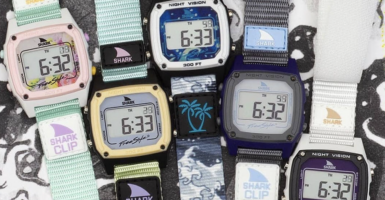Photos Of World War II That Most People Have Never Seen
Although the unprecedented scale of World War I was grand enough to give it the nickname The War To End All Wars, it only took about 20 years after the fact before that perception was proven wrong. After all, World War II would prove even larger and more destructive to the world.
As such, it’s impossible to capture every moment from a conflict that spanned the entire globe and exceedingly difficult to keep track of the photos that do exist. That’s why there are no shortage of photos like these that capture unseen moments from that tumultuous period in world history.
A Failed Landing That Could’ve Been Worse

To an even greater extent than in the previous war, World War II was just as perilous in its naval and aerial battles as it was on land. Although America largely stood alone against the Imperial Japanese Navy, all Allied nations had to contend with the lurking threat of German U-boats.
Indeed, those were likely what prevented these British soldiers from starting their mission, as this ship had to rescue them from their landing craft in May of 1940.
A Subtle Sign Of America’s National Grief

It’s clear from the facial expressions surrounding President Franklin Delano Roosevelt that emotions were heavy when this photo was taken. Indeed, that was because Roosevelt was signing a document officially declaring war on Japan at 4:10 pm on December 8, 1941.
Although most Americans are well-acquainted with the events of the attack on Pearl Harbor and Roosevelt’s description of the day as living in infamy, not everyone saw him wear this black armband of mourning.
Some Cryptic Votes Of Confidence
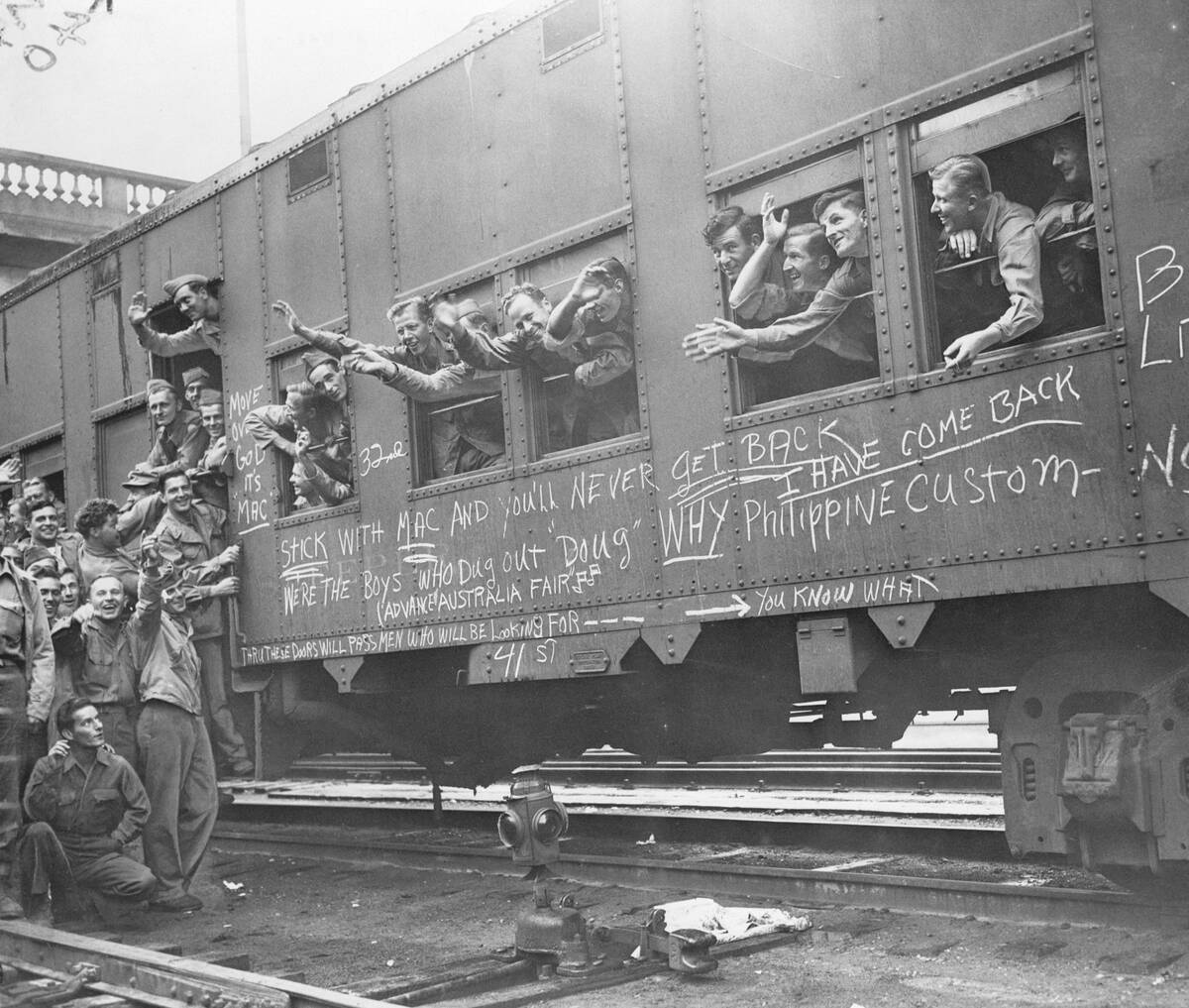
This train car carried members of the 32nd and 41st divisions of the First United States Infantry, who were among the first soldiers deployed in the Pacific after America’s declaration of war on Japan.
Since the United States initially had to cede the Philippines to Japan in 1942, that’s precisely what these men’s minds were focused on. They seemed mixed on how much they trusted General Douglas MacArthur but were clear that if anyone was digging him out of his situation, it was them.
An Exit Strategy For The Wounded
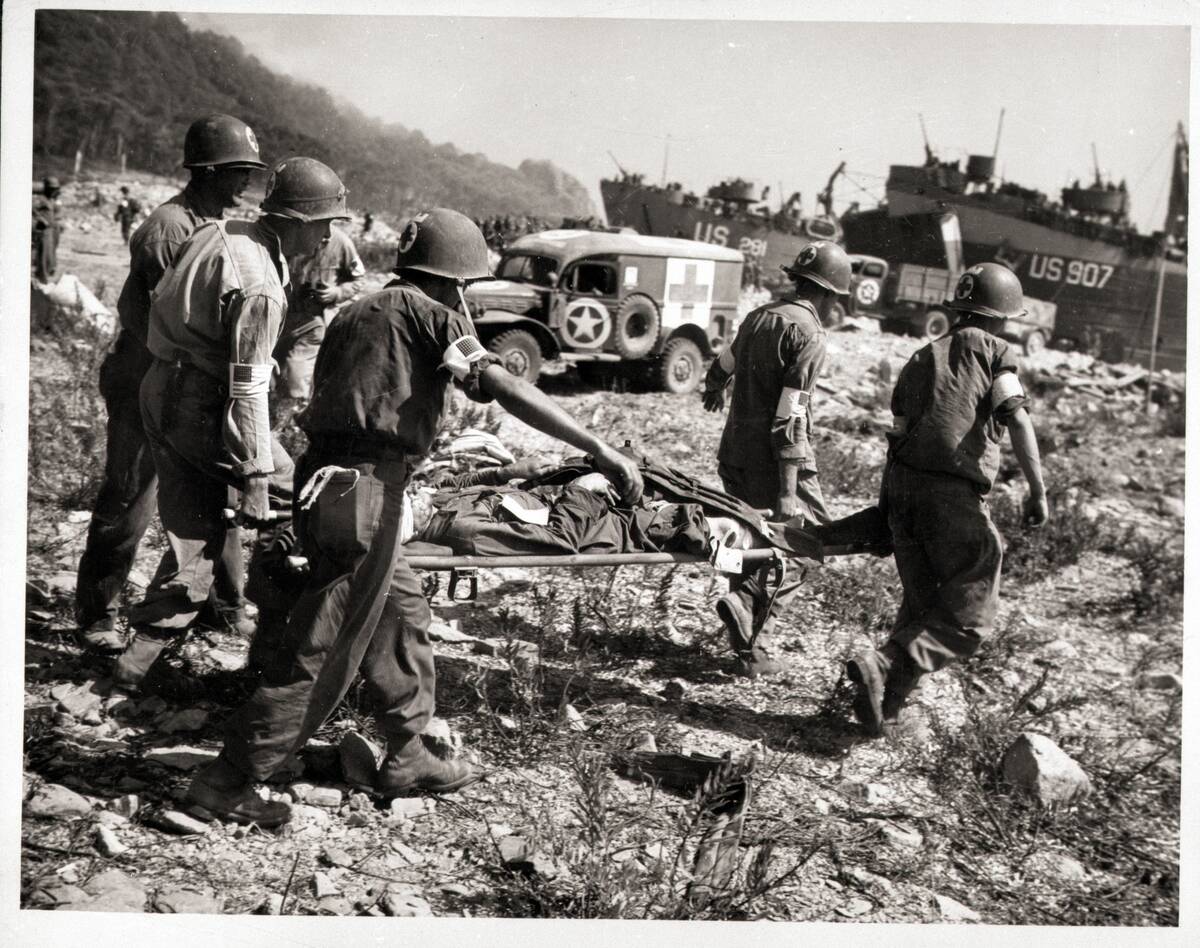
This photo was taken during an American operation in southern France but was focused on how wounded soldiers were extracted from conflicts. As it turned out, medics would transport soldiers like this casualty to landing barges, where they received first aid.
As the medics worked, the barge would transport the soldiers to an aquatic assault vessel operated by the U.S. Coast Guard for off-shore hospitalization. World War II was massive enough that everyone’s help was needed overseas.
A Line Of Young, Eager, Patriots
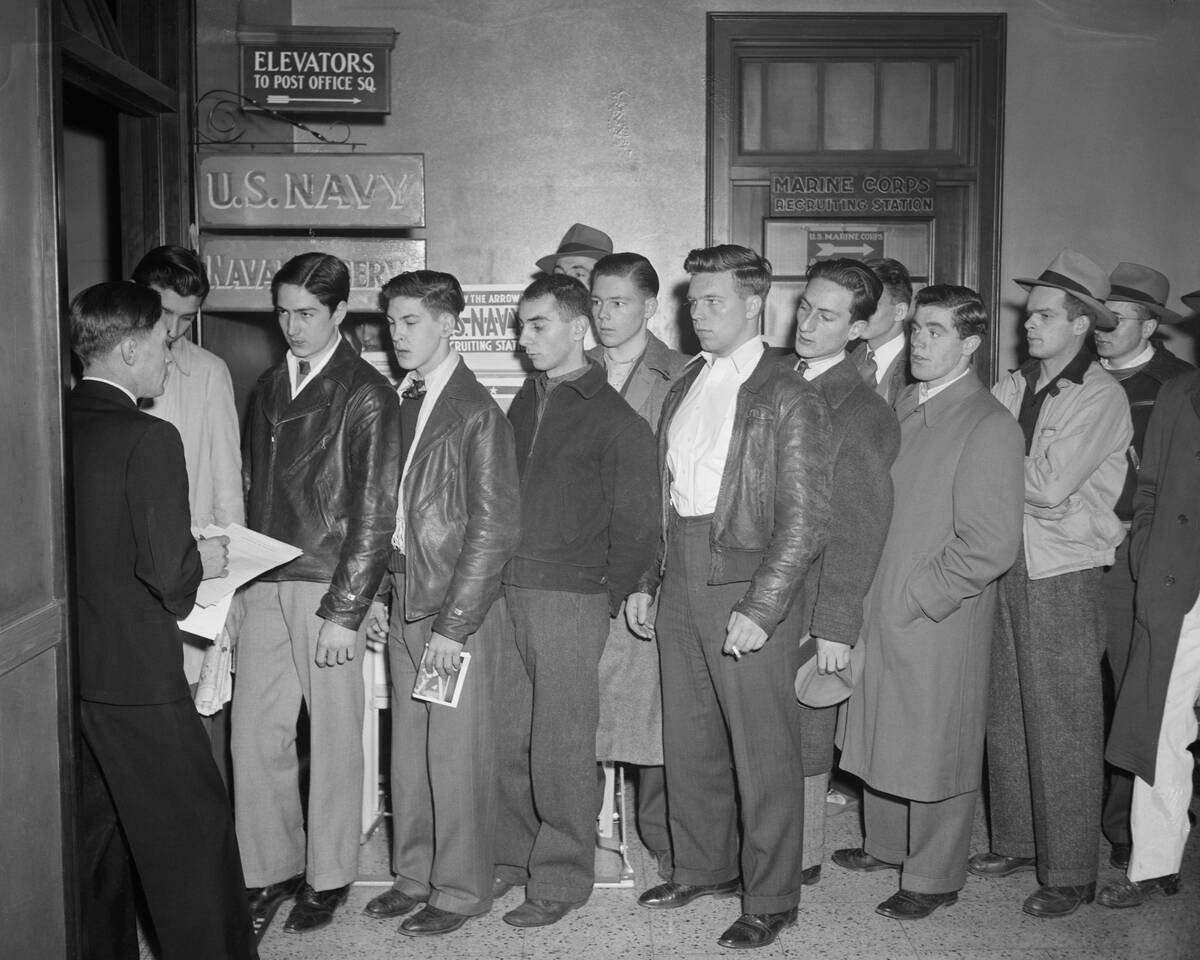
On the day President Roosevelt declared war on Japan, the deep wound that the Pearl Harbor attack etched into the American psyche was felt nationwide.
Thus, sights like the one at this Boston Navy recruitment office were common. Although enlistment had been low enough before the attack to potentially warrant conscription, Pearl Harbor compelled thousands of young Americans like these men to do their part for America’s armed forces practically overnight.
An Old Way That Had Yet To Abate
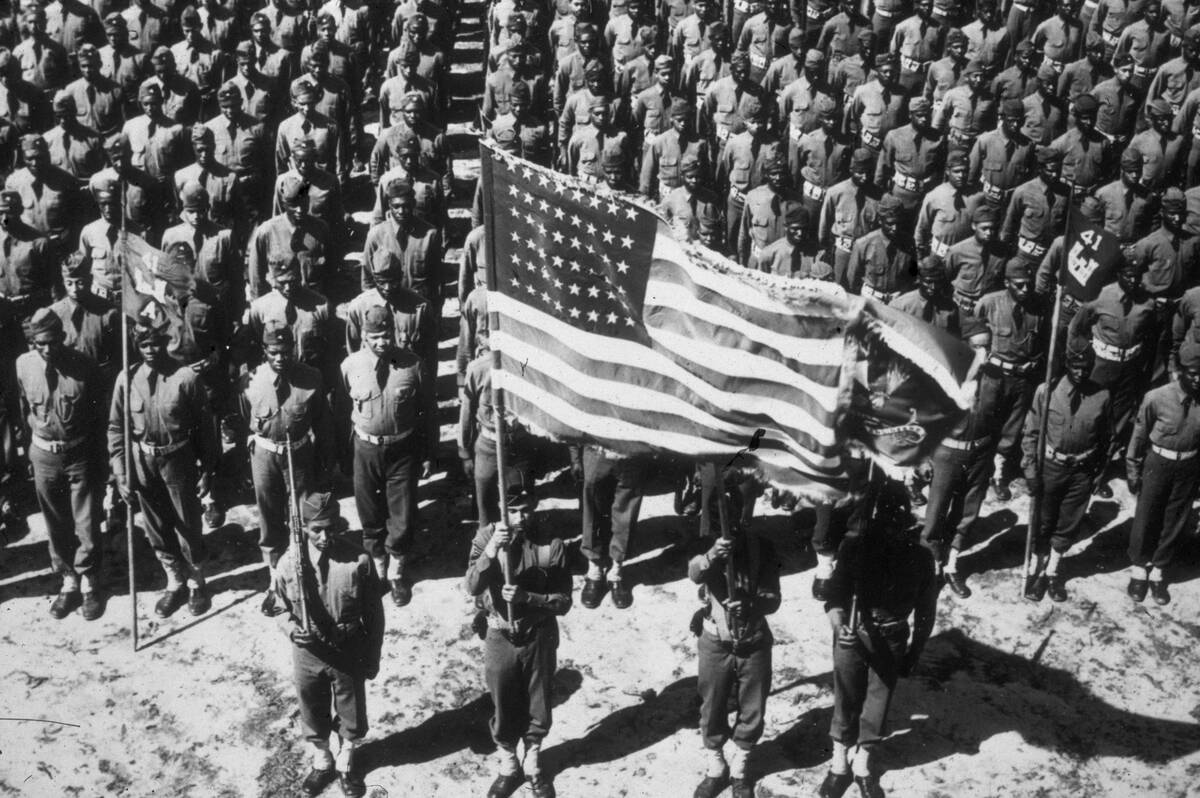
Although this is indeed an Army battalion, there’s a reason why few of the soldiers standing at attention appear to be armed. Rather than infantry, these are members of the 41st Engineers Corps.
Sharp-eyed viewers may also notice that every member of this battalion is African-American. Sadly, that’s because American Army units were still racially segregated during World War II. However, that changed soon after the war, as President Harry Truman signed Executive Order 9981 to abolish discrimination in the military in 1948.
The Last Time They Would Fight Under This Banner
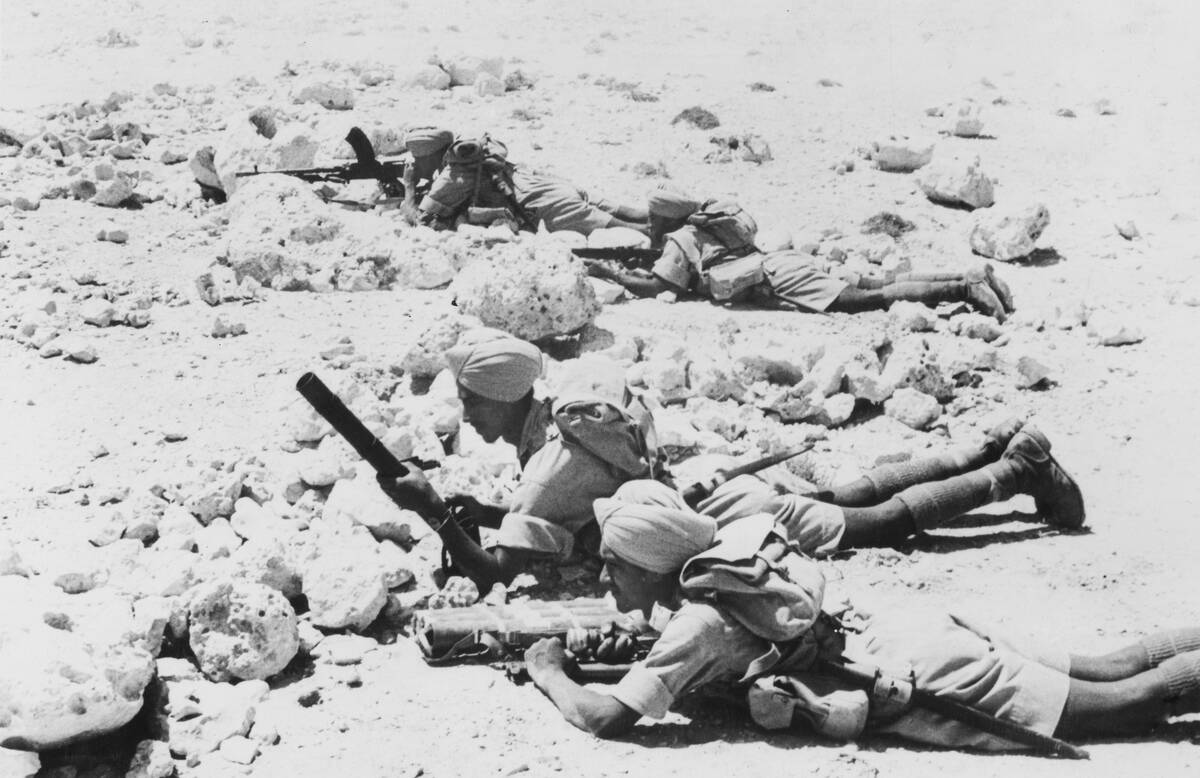
These men weren’t actively engaged in battle when this photo was taken, but they were training for the real thing. Specifically, they were undergoing desert training during the Western Desert campaign in northern Africa, as they were used to more verdant environments.
These troops were part of the 11th Sikh Regiment from the 4th Indian Division of the British Western Desert Force, which military history buffs likely suspected by their use of British equipment like the Bren light machine-gun and the Ordnance SBML mortar. However, this would be the last time these men would fight for the British crown, as India gained its independence in 1947.
An Overwhelming Sense Of Dread

Based on their star insignia, it’s clear that this family from the German-occupied Netherlands was Jewish, which also explains why they’re all carrying baggage. They were being forced out of Amsterdam on the way to a concentration camp in Poland.
It’s unclear what they expected to happen when they arrived but the benefit of hindsight makes it hard not to imagine the life-changing and likely fatal horrors they experienced.
Harsh, Frozen Urban Warfare
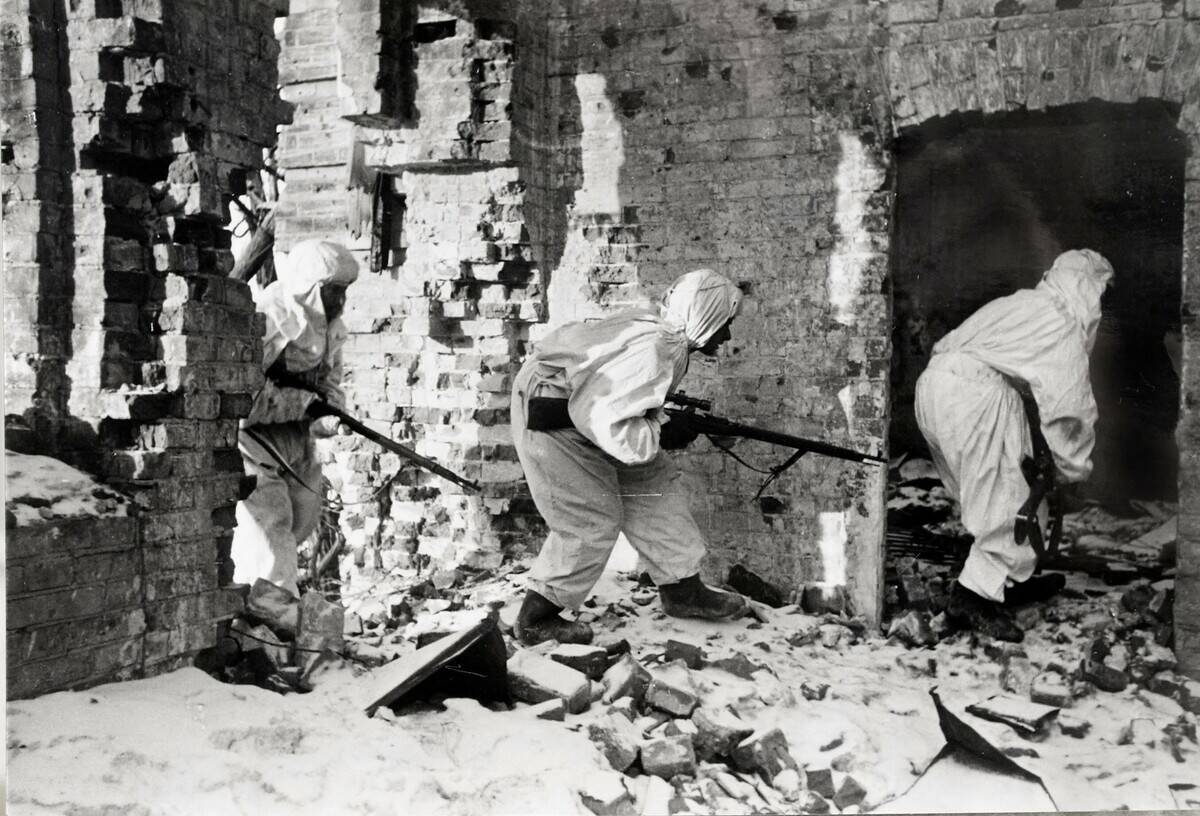
Although it’s well-known that the battle for Stalingrad was one of the bloodiest and most pivotal conflicts of World War II, it’s still easy to underestimate how much every house and every street mattered during that chaotic conflict.
While it’s true that the Germans were famously unprepared for their invasion plan — Operation Barbarossa — to stretch into the winter, it’s also clear that Soviet troops were more prepared to camouflage themselves in the snow than their adversaries.
An American Setback Against Japan
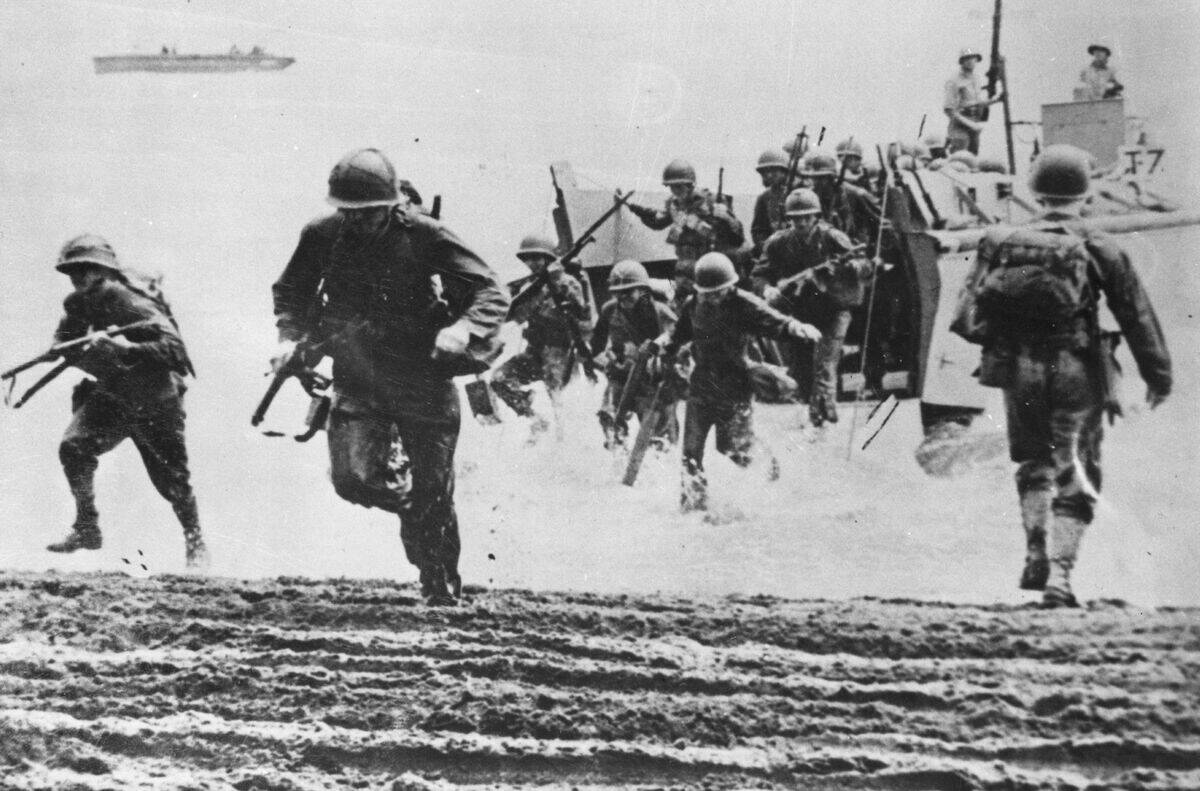
By the time these American marines landed at this beach on the Solomon Island of Guadalcanal, the United States had already claimed a decisive victory at the Battle of Midway that severely hampered the Japanese Navy. Yet, while the Axis nation would never recover its sorely needed aircraft carriers, that didn’t mean they were out of the fight.
The United States would take severe casualties while invading the Japanese home islands, but the military’s struggles at Guadalcanal would be a humbling reminder of how tough their enemy really was before they undertook such a plan.
Even In The Worst Misery, A Little Levity
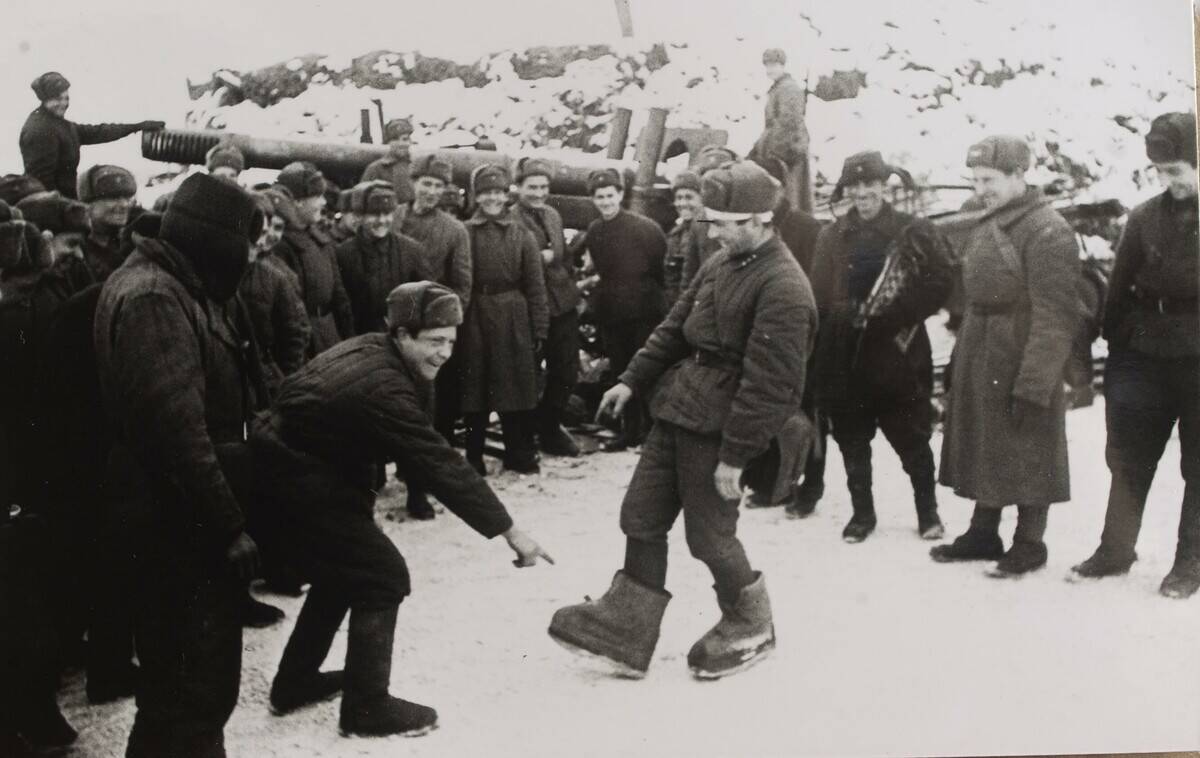
Although it’s easy and probably closer to accurate than not to describe the Battle of Stalingrad as a time of constant misery, it’s worth noting that even the hardest conflicts have downtime. Any veteran will tell you how much waiting there is in military life, even during wartime.
Indeed, that period of waiting gave even Soviet soldiers in Stalingrad a few opportunities to unwind. That’s how this joyful scene of a soldier parading around in giant, captured boots came to be.
The Many Uniforms Of British Servicewomen
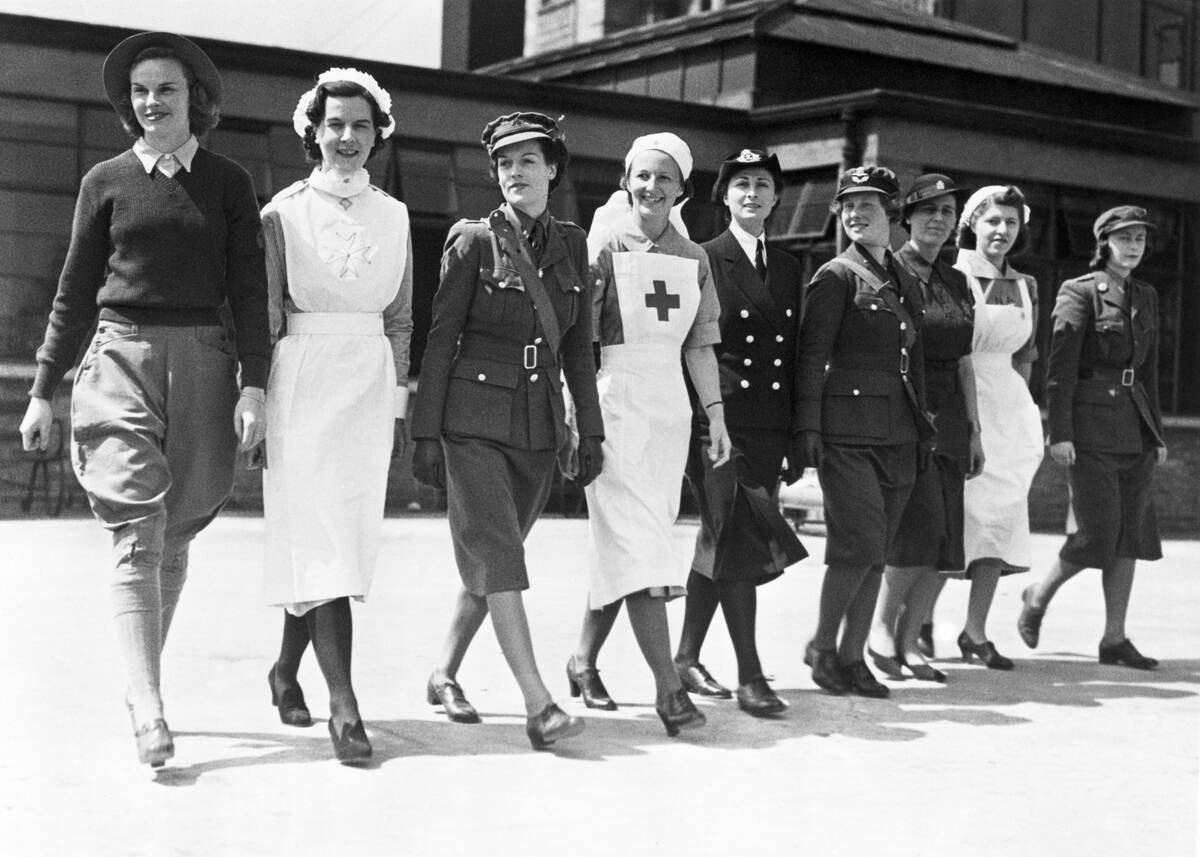
Although the event was taken at is unclear, what is clear is that this was intended as a demonstration of the types of uniforms women could expect to wear in the British military’s auxiliary units.
These uniforms seem to depend on the units the women would be assigned to, though the presence of two nurse uniforms suggest there are also variations depending on the context of their assignments. It’s also hard not to notice that one of these uniforms seems way more casual than the others.
The City Has Devastated But The Danger Hadn’t Passed
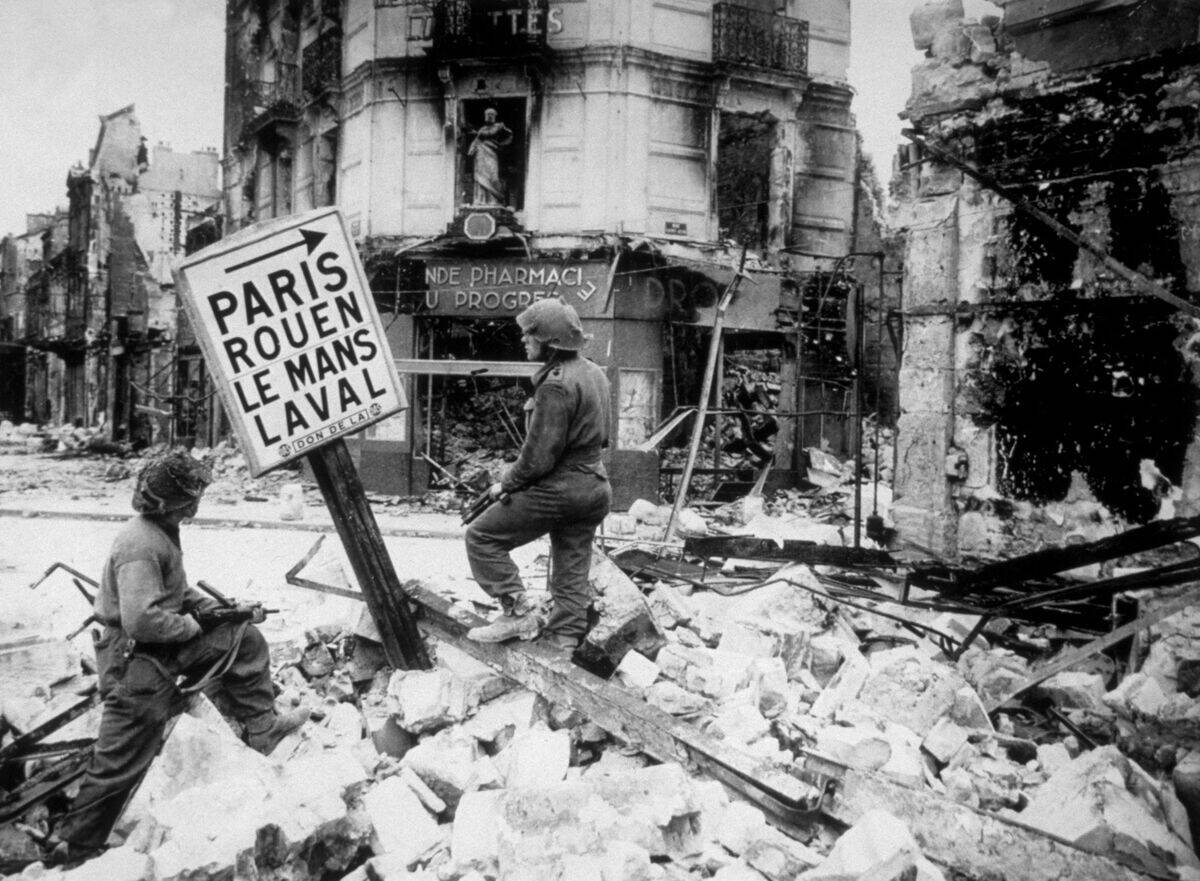
While the Allied invasion of Normandy marks one of the most famous battles of World War II, it was far from the only conflict through which France was liberated. Indeed, occupying German forces fought hard to retain Caen, an important road hub for France.
As such, Caen was the site of heavy and destructive fighting, as this photo shows. However, that fighting may not have been over here, as these two soldiers were searching for snipers.
Harsh, Post-War Conditions In A Defeated Land
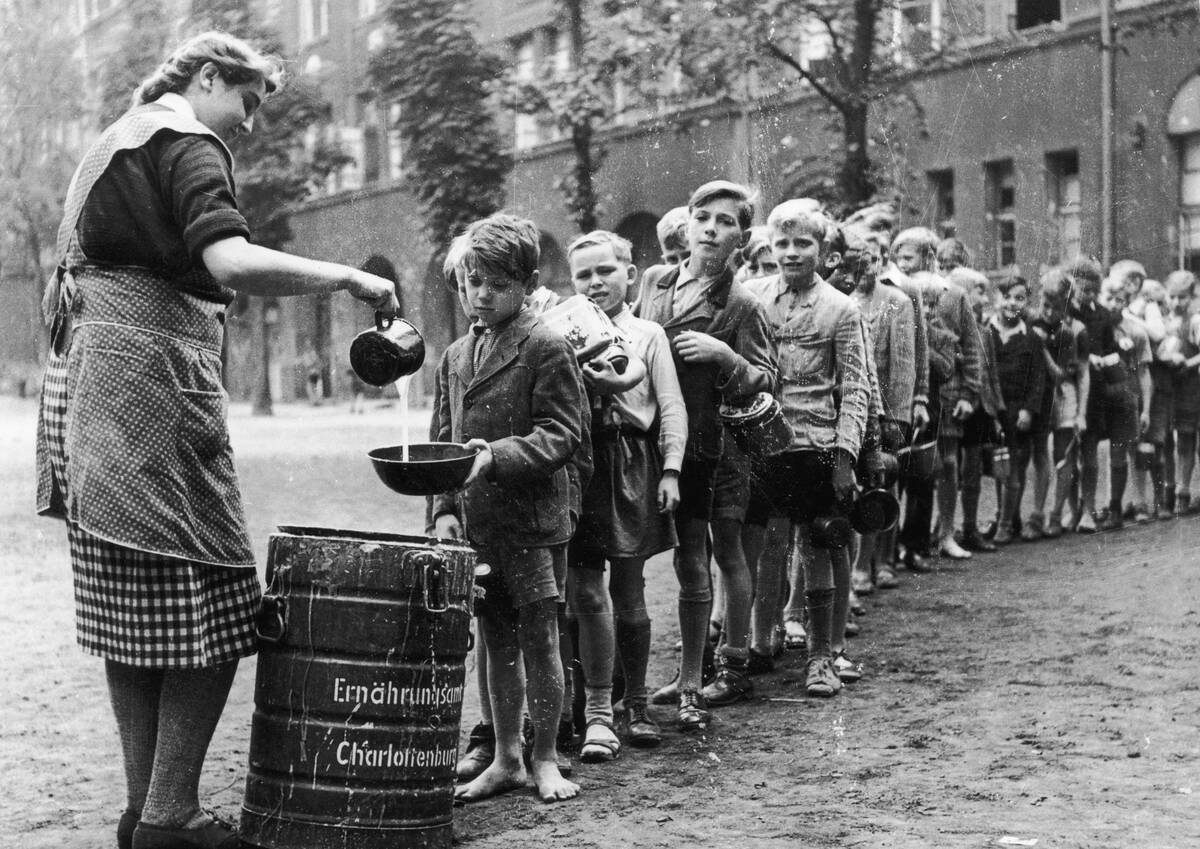
After it was clear that the Allies had defeated Germany, citizens there existed in a partially destroyed limbo as the victorious nations figured out how to divide the occupied country.
Among those lost, uncertain citizens were these schoolchildren, who attended school in Berlin’s Charlottenburg district. There, they were provided gruel rations (flour and milk) by British authorities.
Bravely Charging Forward
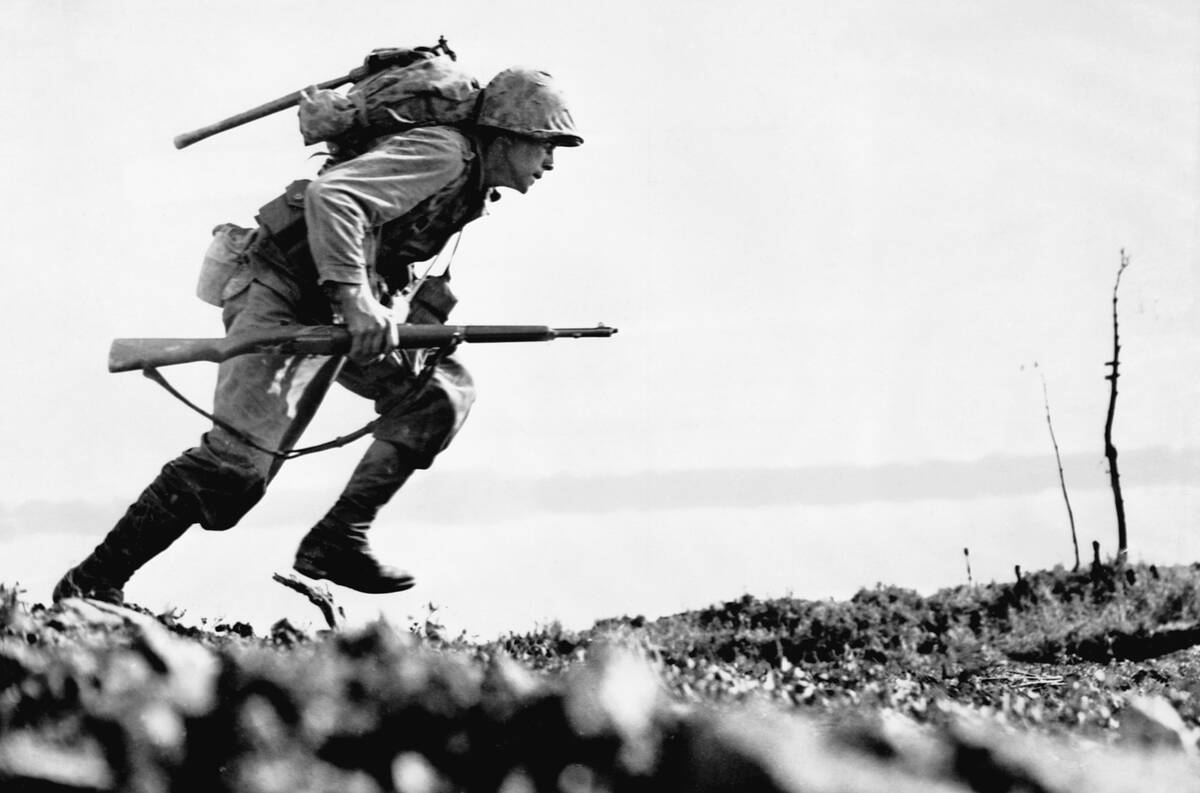
Although America’s island-hopping strategy in the Pacific saw the nation’s forces engage Japanese troops in a wide range of locations, one of the most storied and harrowing of those campaigns took place on the island of Okinawa.
Its strategic value was well-known to both sides, as it was the last stop before the U.S. invasion of Japan’s home islands. Although U.S. marines like this man had captured three-quarters of Okinawa within three weeks of fighting, that didn’t make this marine’s charge into enemy machine gun fire any less perilous.
The Allies Gain A Foothold In Italy
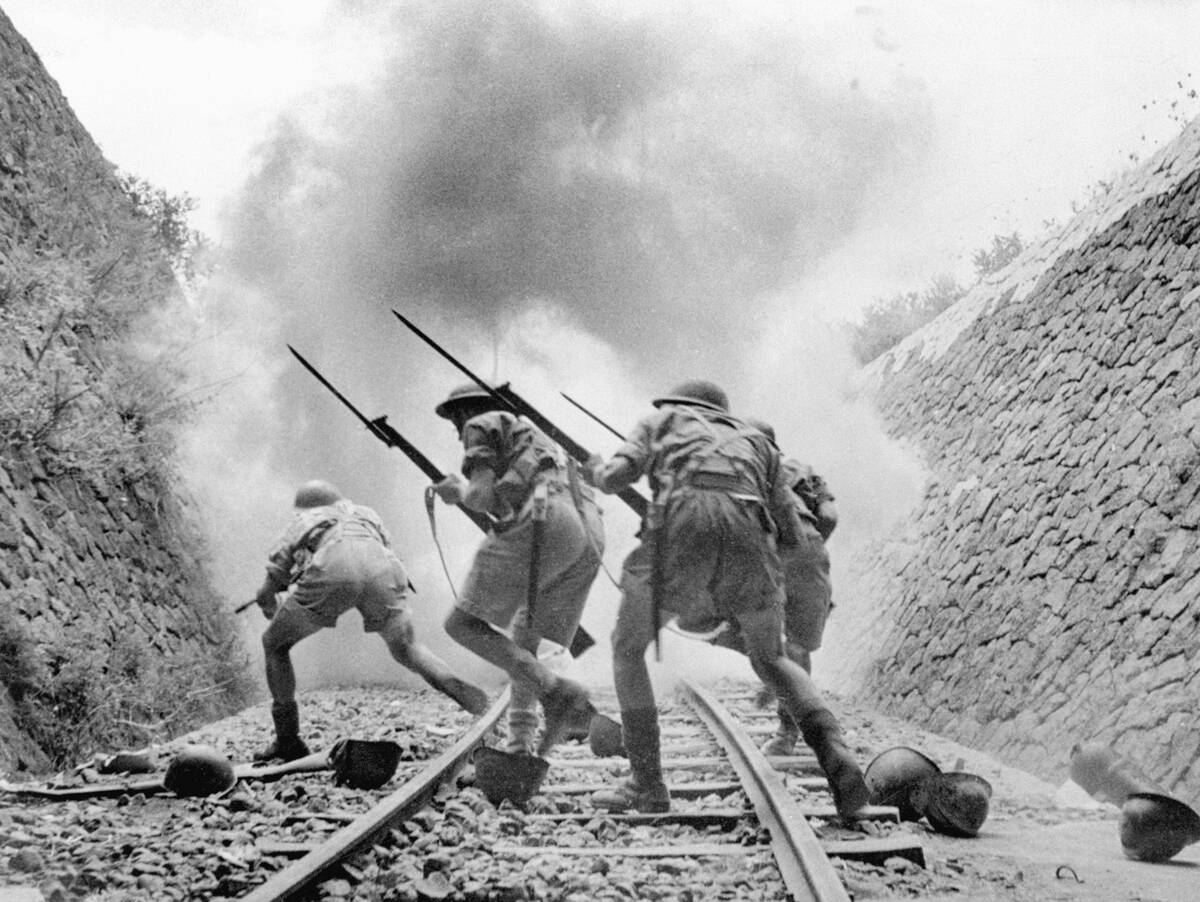
Although the Allies waged a difficult campaign during the liberation of Italy from Benito Mussolini’s regime, they were able to make the progress they did in 1944 thanks to an important invasion a year earlier.
This was the invasion of the southern Italian island of Sicily, and this photo shows members of the British Eighth Army fighting hard with bayonets fixed during that campaign. They would end up gaining an advantage through a lesser-used part of the railroad tracks thanks to the coverage offered by a water tower and some rail cars. When the dust settled, the railroad stronghold would be theirs.
Even Royalty Did Their Part
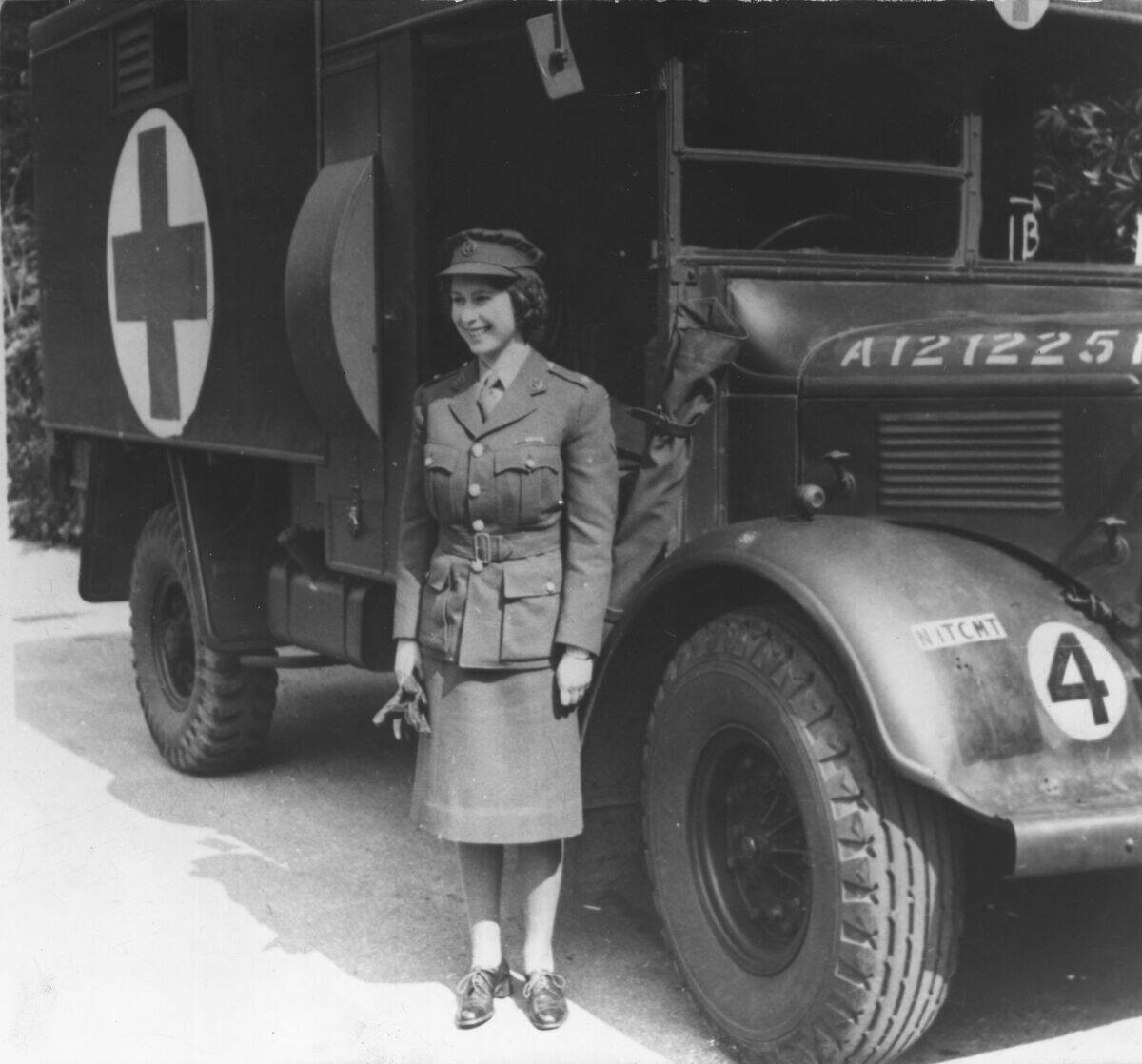
Considering what was at stake in World War II, Allied nations used a wide variety of promotional campaigns to encourage citizens to enlist and buy war bonds to support the war effort.
Indeed, that made then-Princess Elizabeth’s enlistment in the Auxiliary Territorial Service an important symbol of the British public’s mobilization. Although the future queen wasn’t placed anywhere near the front lines, she was trained to maintain and drive the corps’ ambulances.
Sometimes, The War Was Psychological
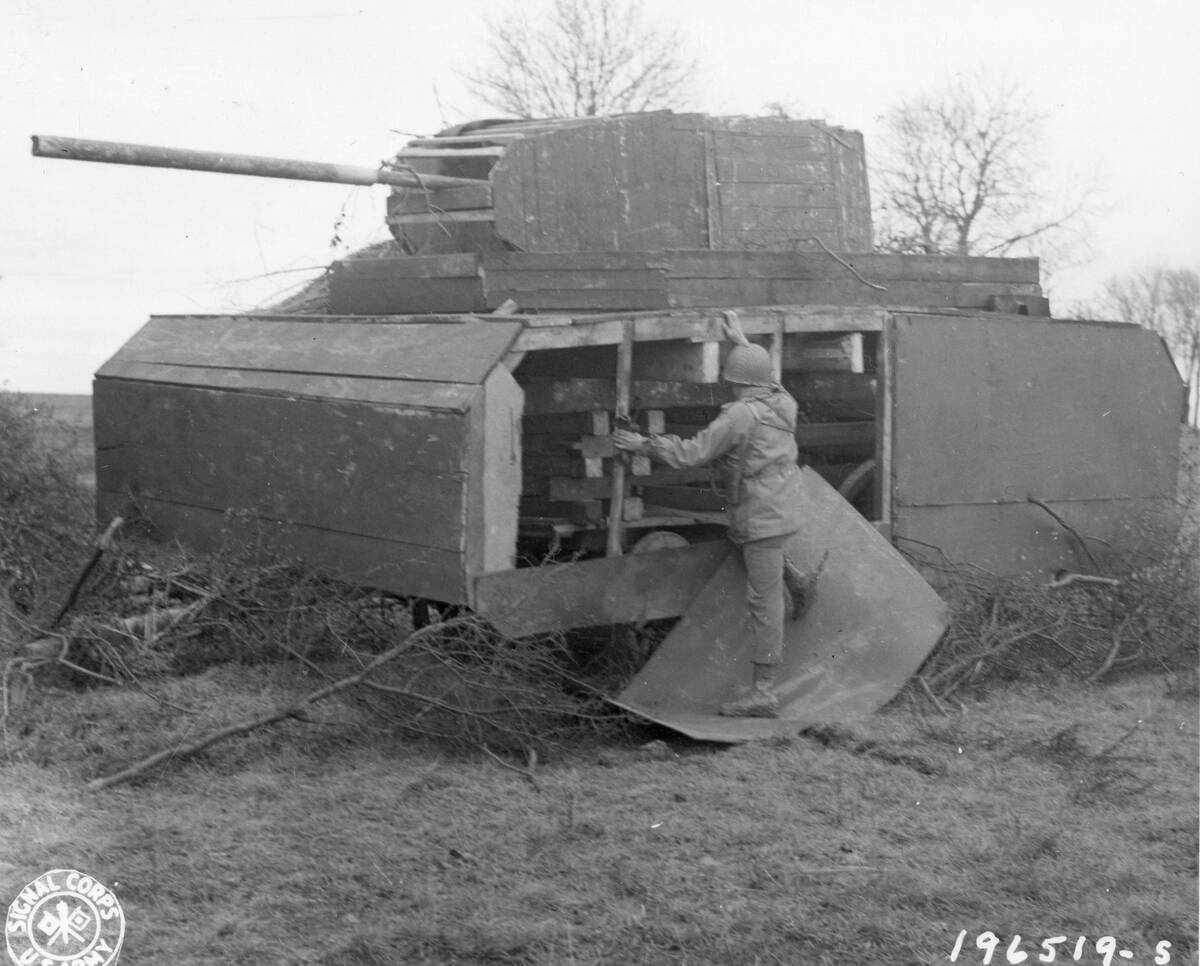
During World War II, both sides understood that deception could be just as valuable of a weapon as any tank or ship. Although the Allies got clever in their application of planted false information and movie props masquerading as military equipment, they weren’t alone on that front.
As this photo demonstrates, it wasn’t unheard of for German forces to build fake tanks like this to deceive Americans fighting in Metz, France, about the strength of their numbers. Each “tank” consisted of a cart, a wooden frame, and a “gun” made from a length of drain pipe.
Getting Ready For The Real Thing
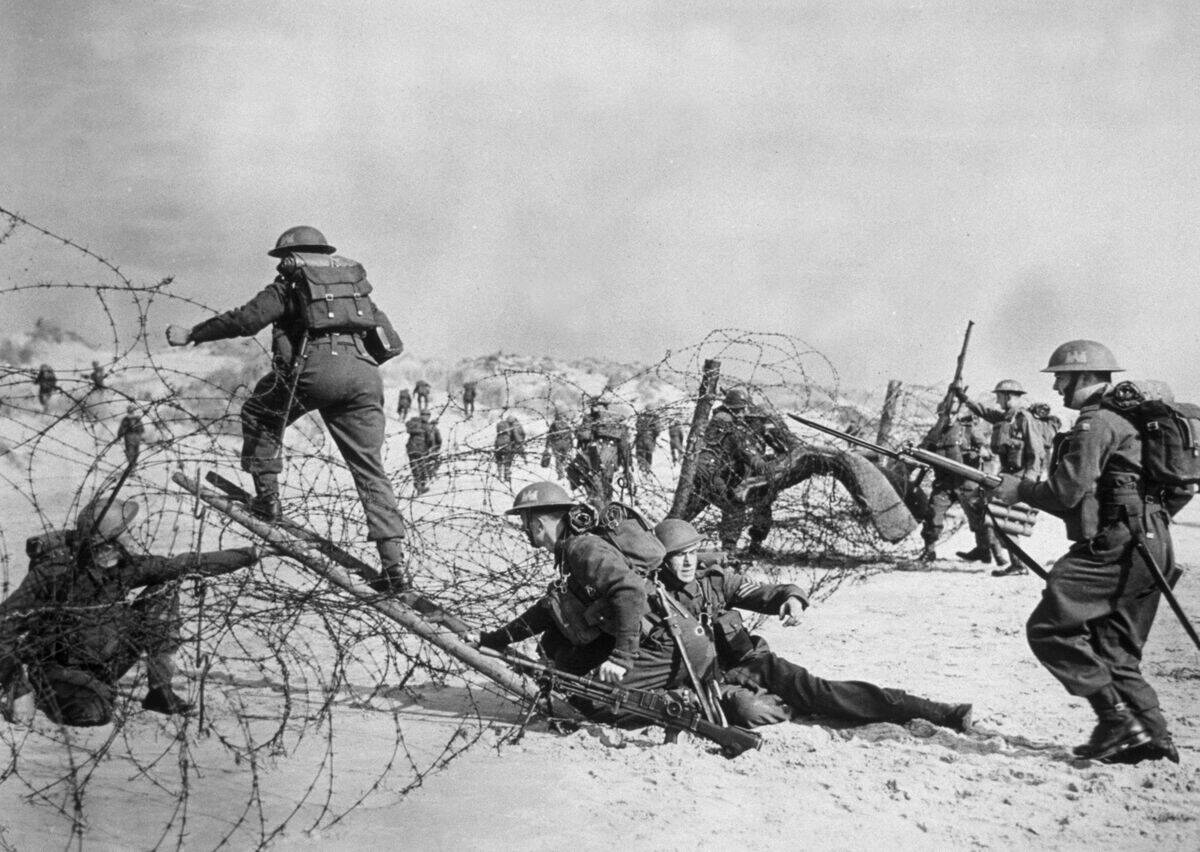
Before Allied forces carried out genuine invasions, they would simulate their plans as training exercises to ensure their operations could actually be feasible. This photo captures British forces engaging in one of those exercises in 1940.In this case, they’re practising overcoming barbed wire fences that they could expect to encounter during a seashore invasion. Since defenses like that were certainly present at Normandy, to use the most famous example, it was an important part of their training.
The Public Was Prepared

Photos of large crowds wearing gas masks can also be a little unnerving, but by this point, the United Kingdom was preparing for war rather than entering it. It’s for that reason that a group of London’s telephone operators and engineers were running a gas drill on February 13, 1937.
Indeed, this amounted to some cautious and forward-thinking preparation, as Germany hadn’t even annexed Austria by the time this happened. Since the nation had remilitarized the Rhineland, however, they saw reason to think Germany might use similar chemical warfare as in World War I.
A Little Different From Saving Private Ryan
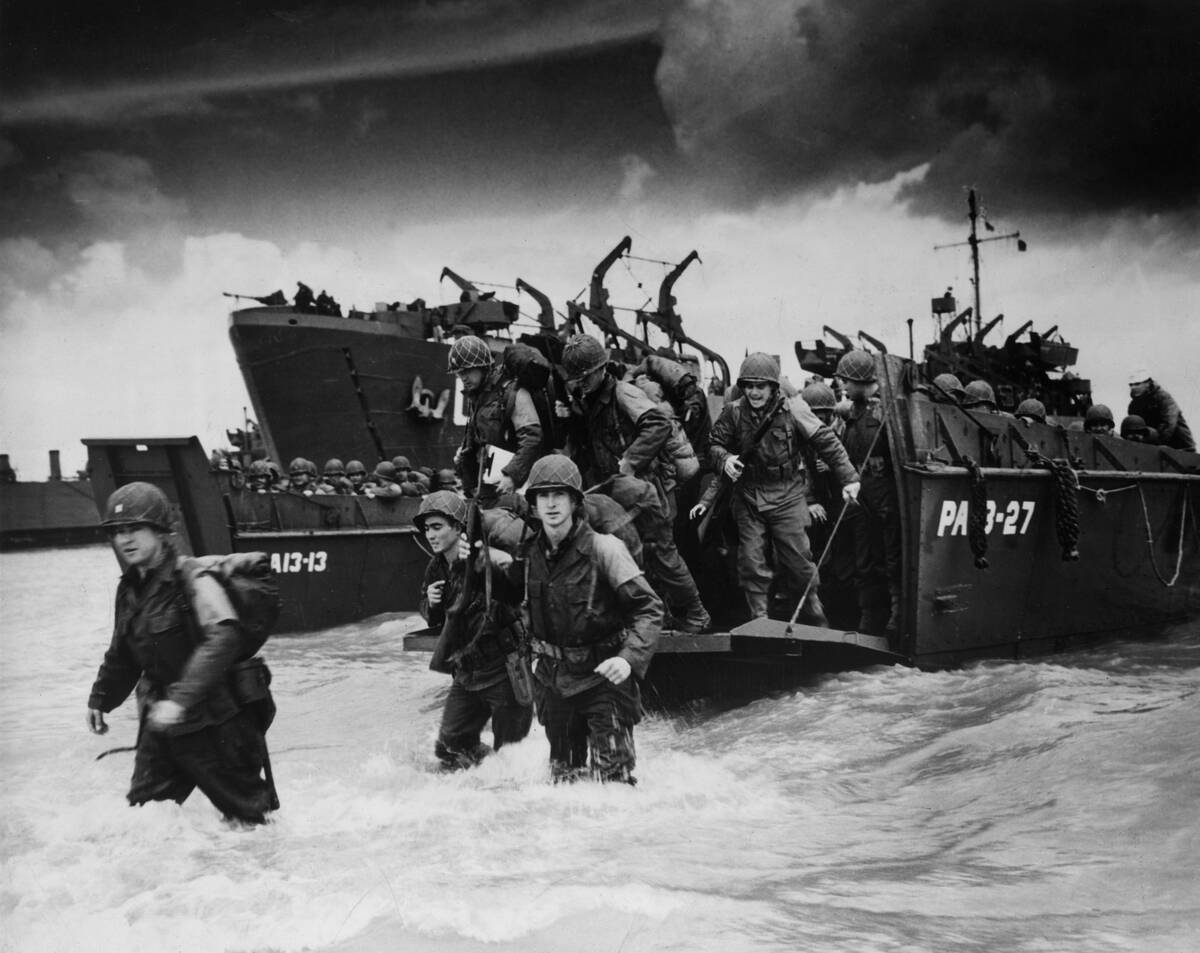
Saving Private Ryan was considered realistic enough in its opening scene depicting the invasion of Normandy that many veterans couldn’t finish watching it. However, even the realism of that scene couldn’t possibly cover the extent of history’s largest amphibious invasion.
After all, the tension in this photo is markedly different from the perilous scrambles from the landing barges depicted in the movie. That’s because these men were reinforcements who weren’t part of that initial scramble.
This Isn’t The Transportation People Expected
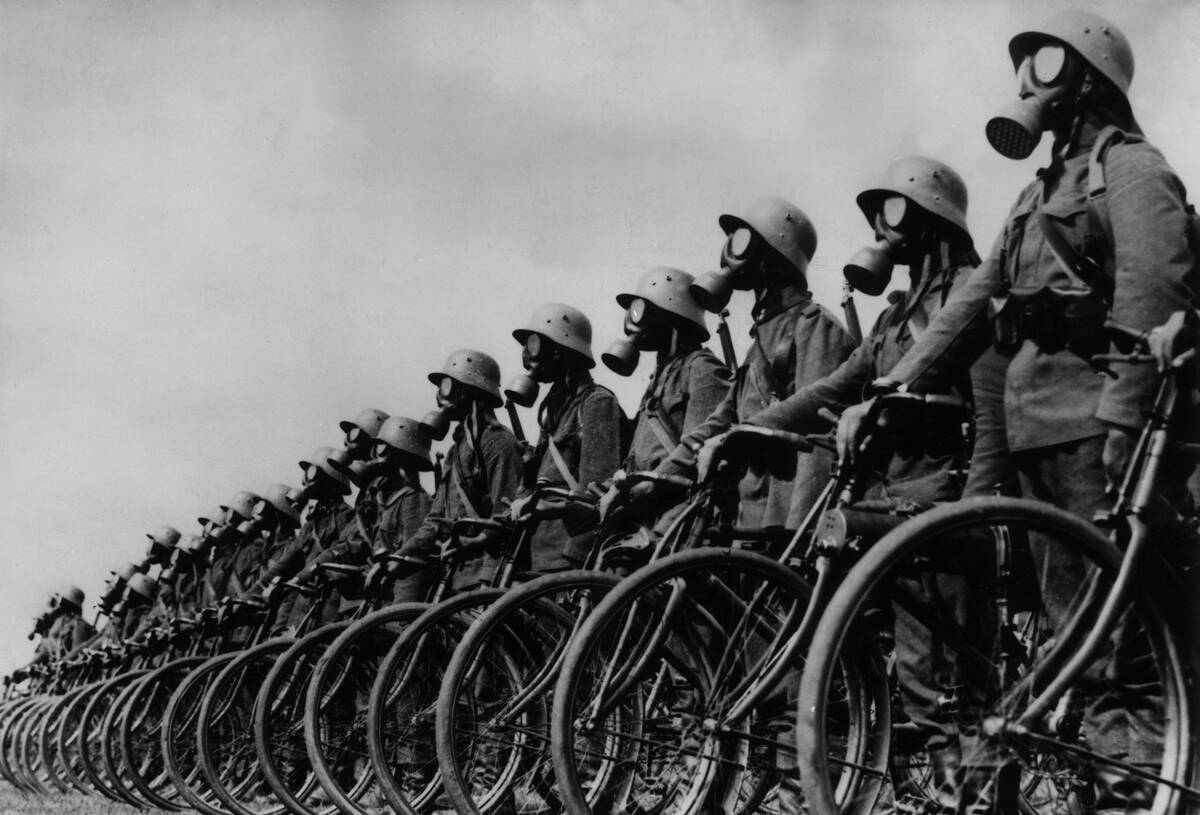
Although World War II is often described as an advanced war fought with aircraft carriers and other state-of-the-art combat vehicles, it’s also true that nowhere near all forces were working with that level of tech.
Indeed, it wasn’t unheard of for soldiers (especially German soldiers like the ones depicted here) to primarily rely on manual transportation options like horses and bicycles. For instance, this is a German light machine gun Cyclist Corps standing at attention in Austria.
The Fight Carried On Before Liberation
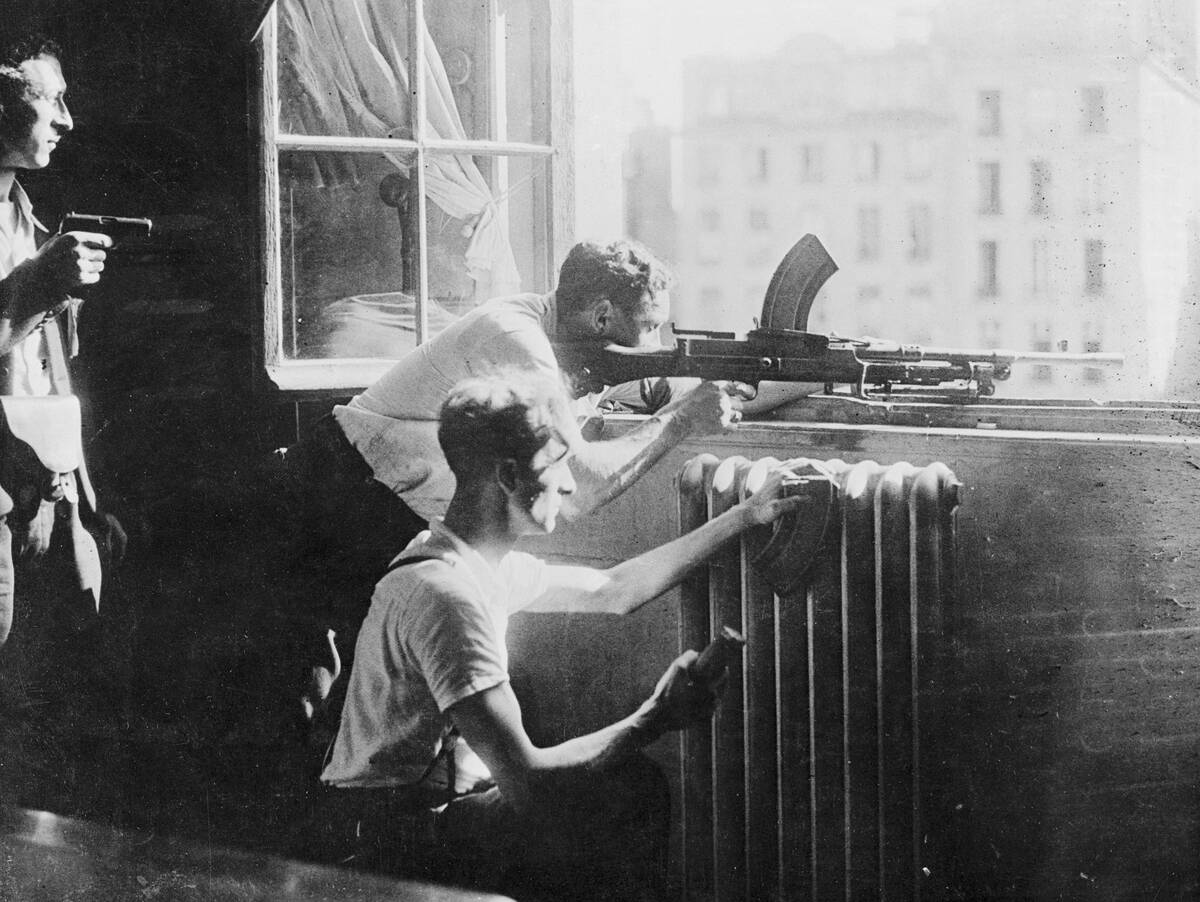
Although German forces occupied France quicker than even they expected, that doesn’t mean it was smooth sailing before Allied forces liberated France. All the while, the occupiers faced acts of sabotage and insurgency from the French Resistance.
Indeed, three members of the resistance are pictured here, firing and supplying a Bren light machine gun with ammo as they take the fight to some German snipers.
A Famous And Historic Fighting Force
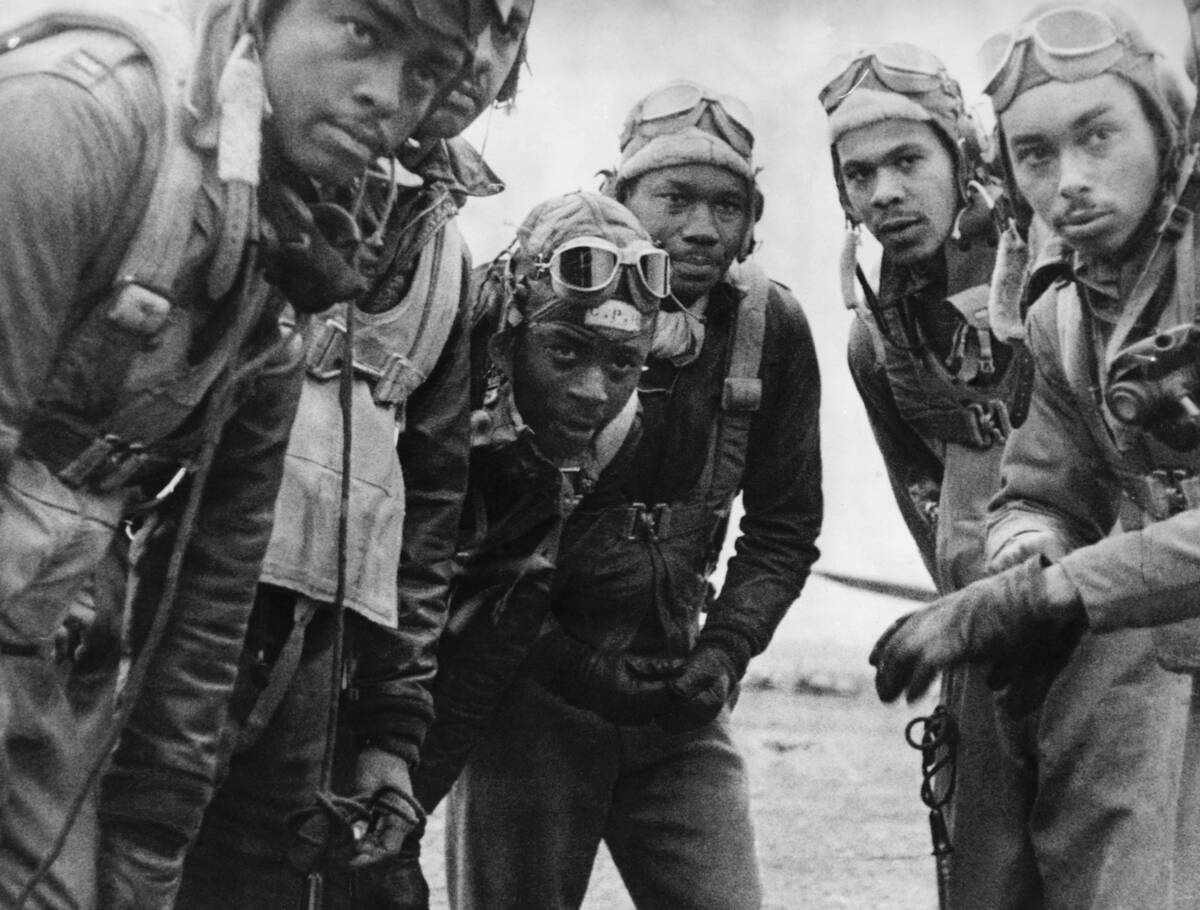
During World War II, the United States enacted an unprecedented program to train about 1,000 Black Air Force pilots in Tuskegee, Alabama. Graduates of this program were known as the Tuskegee Airmen and could boast an impressive mission success record that made them some of the most highly sought-after escorts for Allied bombers.
Six of these airmen were depicted in this photo, which was taken in Italy in 1944.
Only One Of These Men Would Survive The War
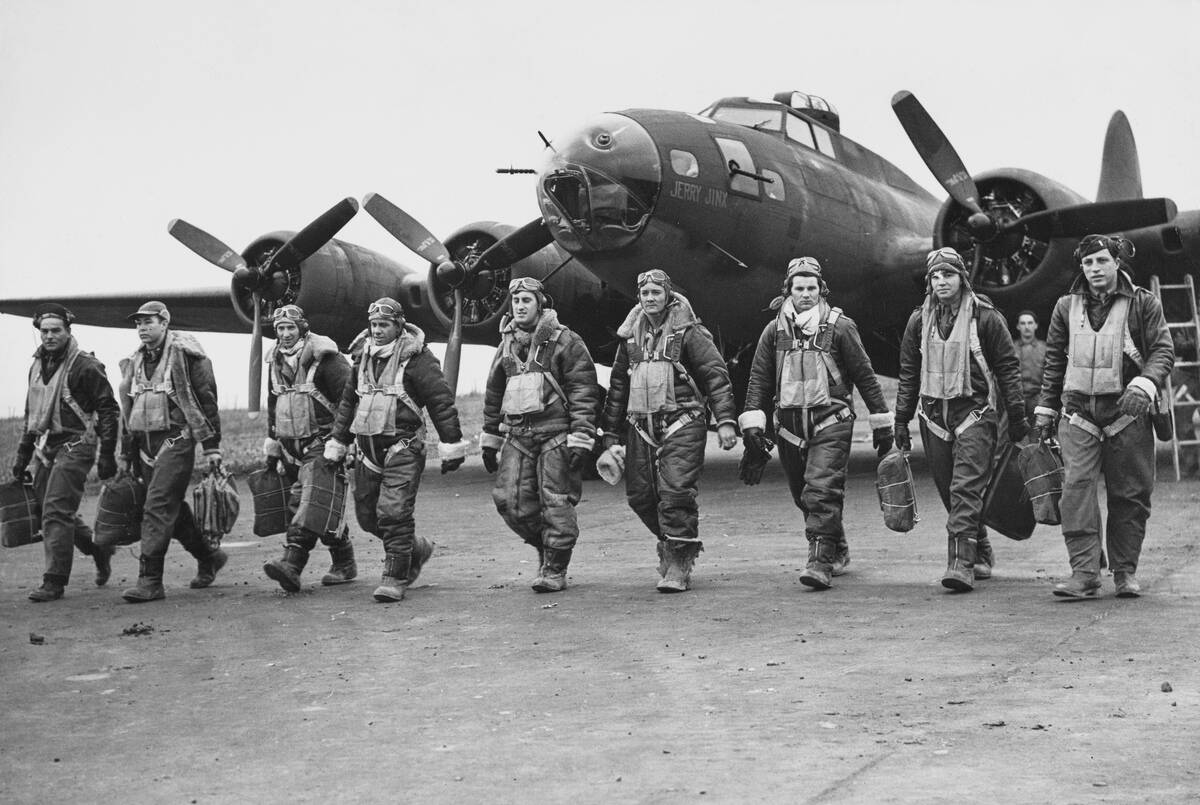
These American Air Force troops were the crew of the Jerry Jinx, a Boeing B-17E Flying Fortress that was part of the 427th Bombardment Squadron. They’re pictured walking away from the aircraft on December 10, 1942, after their planned attack on Romilly-sur-Seine, France, was cancelled.
On January 23, 1943, the Jerry Jinx was doing a run over the U-boat pens at the ports of Lorient and Brest when it was shot down by the Luftwaffe. Only Rear Gunner Sergeant Bernard Jurosek (third from right) survived, and that was only because he was assigned to another plane at the time. Sergeant Roger Milford died in his place, and Jurosek would eventually pass away in 2005 at the age of 85.
A Forgotten Detail In An Otherwise Famous Photo

Scholars of World War II and those who were alive at the time may recall this photo, which signified the end of Germany’s involvement in the war with the image of a Soviet soldier waving the USSR’s flag over Berlin’s captured Reichstag.
However, the age of the photo makes it a little difficult to tell that this banner wasn’t ready-made for this moment. Instead, Soviet soldiers fashioned this makeshift flag out of tablecloths.
A Portrait Of Soviet Mobilization
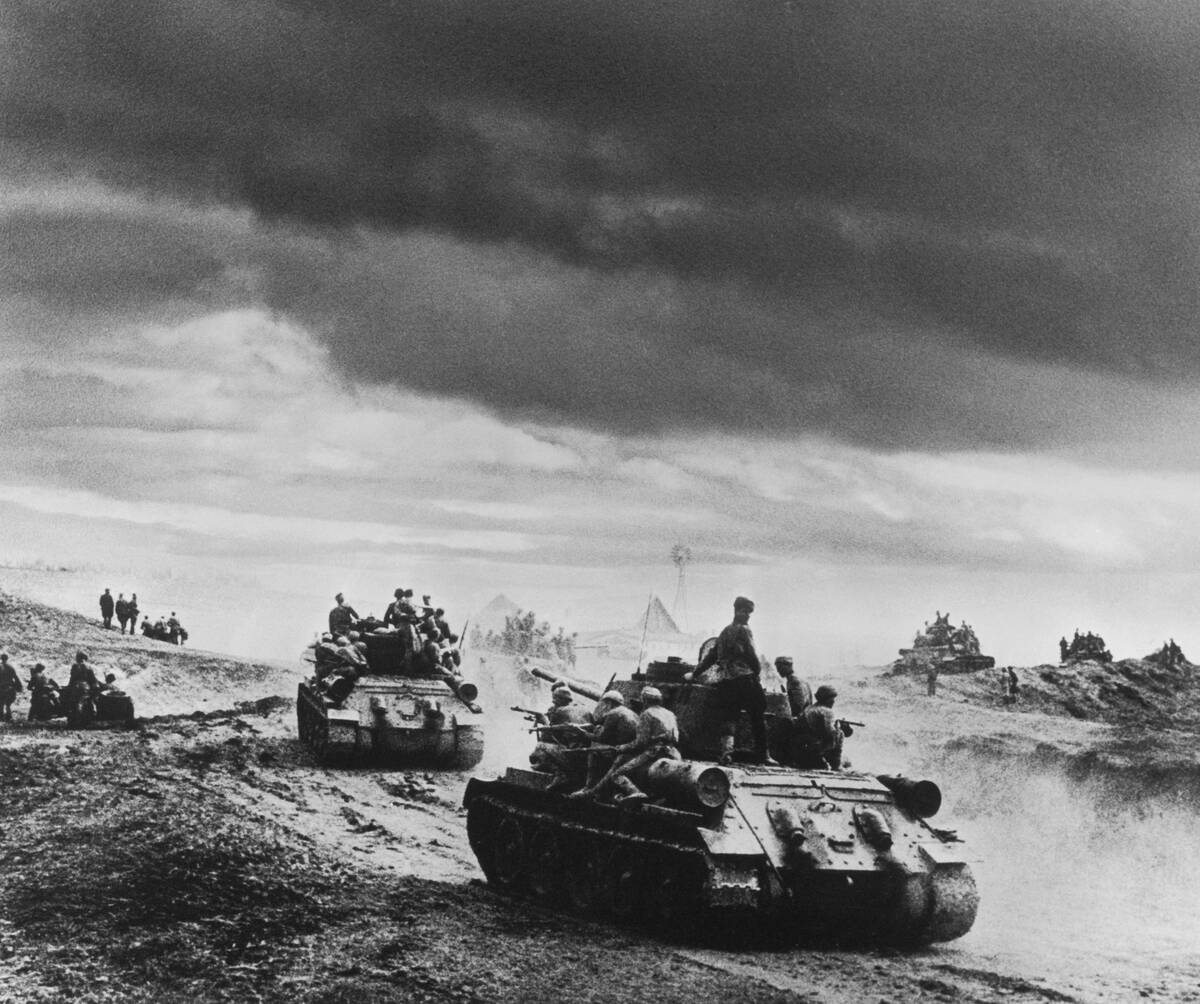
This image doesn’t feature any information regarding when it was taken, which makes the context a little difficult to determine. What is known is that it’s depicting Soviet tanks on their way to Russia’s front with Germany.
Depending on when this was taken, they could either be travelling to meet German forces during Operation Barbarossa or moving to help push them back after the German invasion of the Soviet Union failed.
It’s Like A Dress Rehearsal

Although this photo depicts two members of America’s 29th Infantry division running under cover of smoke grenades during a training exercise, it’s clear from their location that they were training for an imminent operation.
That’s because this photo was taken at Okinawa. Considering how tense and protracted the weeks-spanning battle on the key Japanese island was, it likely wasn’t long before these men made this run for real.
Germany Got Closer To Invading Britain Than It Seemed

British citizens who lived through World War II will never forget the horrors of the Blitz, and while the Battle of Britain ultimately meant victory for the Royal Air Force and decimated the Luftwaffe, it hardly seemed like a certain victory at the time.
In those harrowing days in 1940, it likely seemed to the residents of Guernsey — a British protectorate in the English Channel — that the invasion of Britain was imminent after these German troops marched down their streets. However, that was a close as the Germans would ever come to invading the British Isles.
That Stiff Upper Lip Was No Joke
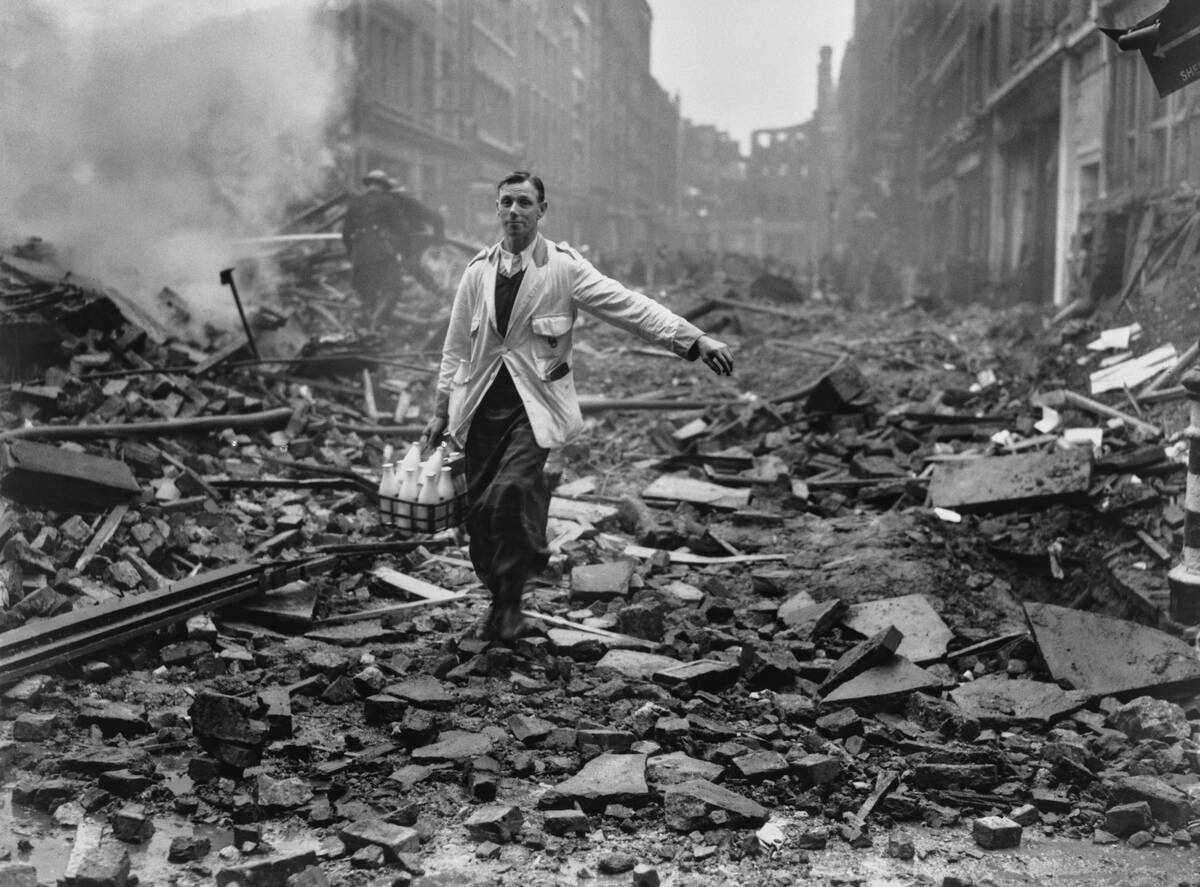
British citizens and soldiers during World War II often valued keeping a quiet, calm, stiff upper lip during times of abject peril and hardship. Indeed, this photo from London’s bombed-out Holborn district serves as a poignant example of this mindset.
That’s because it shows a milkman calmly making his deliveries as he walks through ruined streets, forced into the grim practicality of figuring out which of the homes and families on his route still remain.
A Joyful, Lucky Reunion

Although millions of Americans anxiously awaited for news of the men in their family as they fought overseas, some were overjoyed to see their loved ones return home alive and unscathed.
Indeed, that was the case for the wife and daughters of this Navy officer, who had the good fortune of being able to greet him with a warm embrace after he returned from the Pacific Theater.
Everybody Worked Harder Than Ever
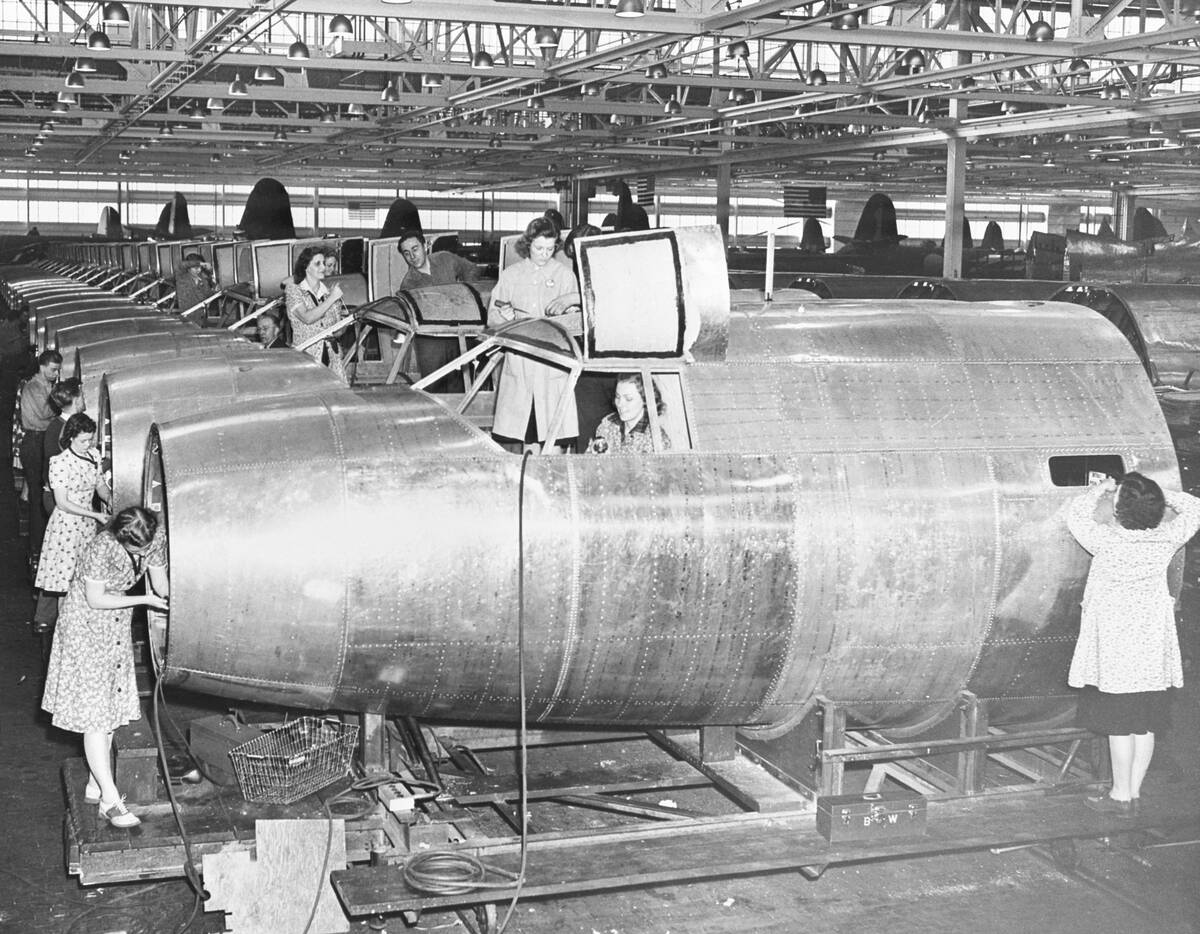
Although the scale of American manpower involved in the two-front war the nation fought with Germany and Japan was unprecedented, American industrial production had to step up beyond its usual capacity to meet the war effort’s material needs.
As such, the nation’s women found themselves working in vehicle and munitions factories like those working on these airplanes at a Douglas assembly plant. Although this photo doesn’t have a specific date, these women were likely busy for years at a time.
There’s More Downtime Than It Seems
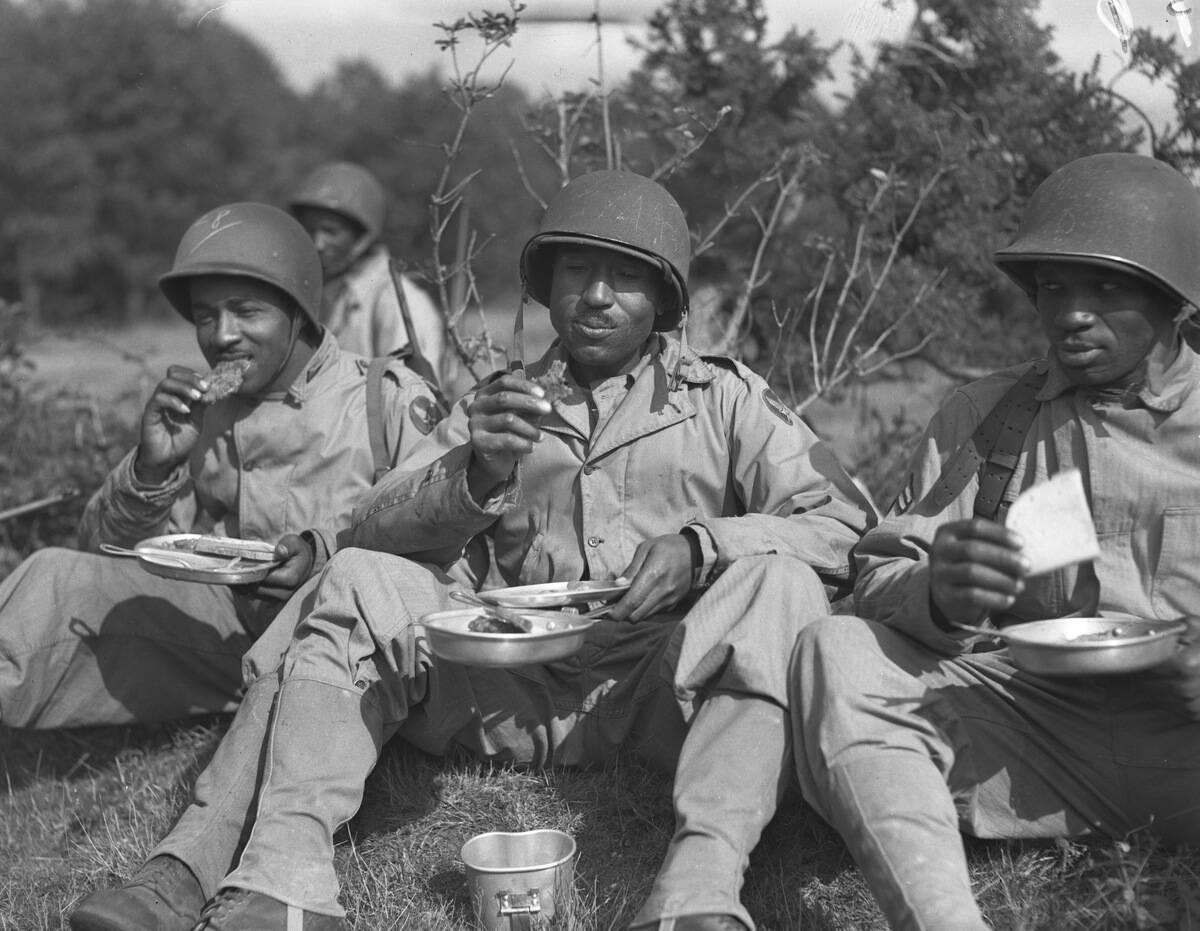
These men from America’s 8th Army Air Corps were taking a break to eat their rations during combat maneuvers training in England, but this scene could have unfolded at any point during their time serving in World War II.
Even though that was the biggest war the world has ever seen (and hopefully, ever will see), the old adage of war being “months of boredom punctuated by moments of terror” nonetheless holds true. Soldiers are often scarred by the action they see, but it can be surprising how little of their time that action took up.
Humans Weren’t The Only War Heroes

Although every nation involved in World War II awarded military honors to its bravest, most self-sacrificing, and most cunning soldiers and officers by the time all was said and done, they weren’t the only ones to receive recognition.
Indeed, Allied nations also honored some animals for playing their own key roles in their victory. While some of those animals (like the Polish bear Wojtek) were unusual and unlikely war heroes, many were carrier pigeons like the one this English squad is training to handle.
The Devastating Aftermath Of Invasion

Although some elder Britons can still recall the horrors of the Blitz, London was far from the only city subject to an aggressive German aerial campaign. Indeed, the Dutch city of Rotterdam and the Polish capital of Warsaw were also devastated by bombers.
Considering that the invasion of Poland was considered abhorrent enough to spur the United Kingdom and France into action against Germany, it’s perhaps not surprising that Warsaw would be strewn with so much rubble in this photo.
Where The War Should Have Started
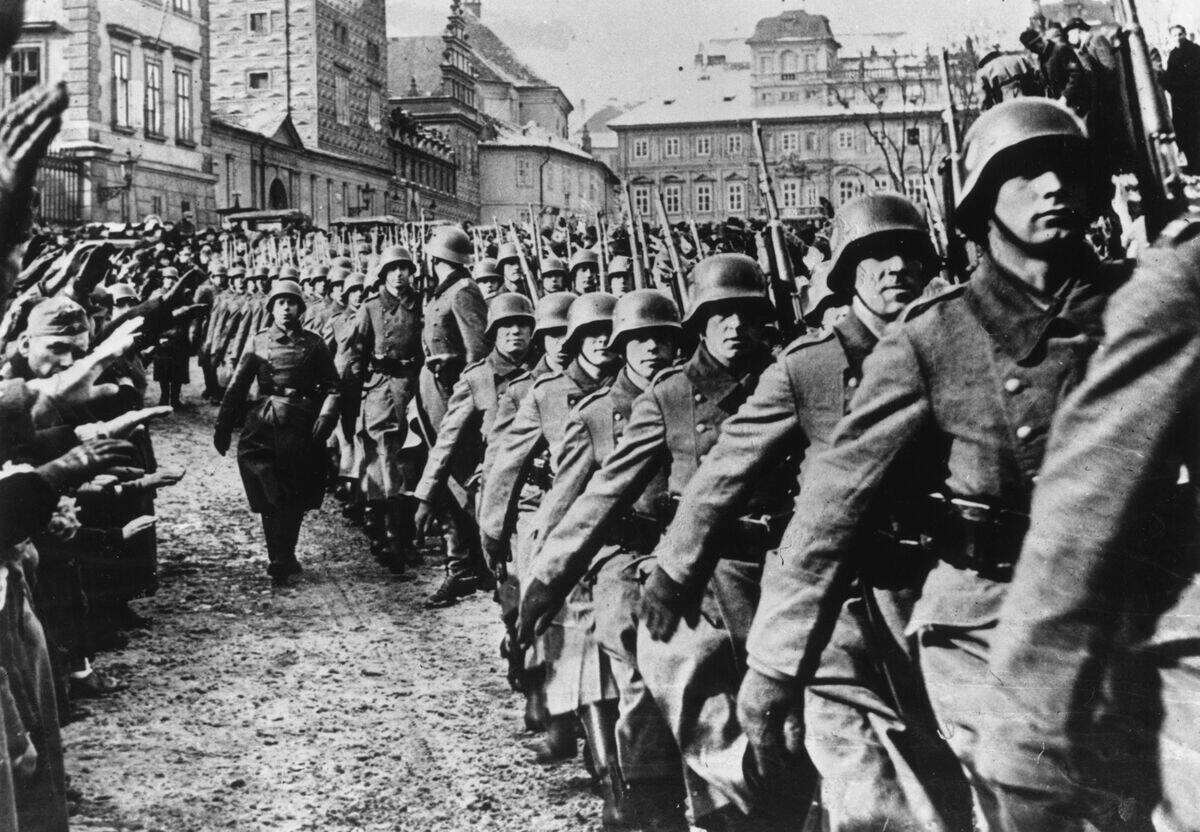
Although it’s widely understood that the German high command made their fateful enemies during the invasion of Poland, it’s not uncommon for historians to criticize British Prime Minister Neville Chamberlain for the policy of appeasement that gave Germany enough latitude to do so.
Indeed, if it were clearer to Chamberlain that this policy wouldn’t work, it may have been this scene that would have started World War II seven months early. That’s because this depicts German forces marching through Prague during the invasion of what was then Czechoslovakia.
A Captured Tank Is Captured Yet Again
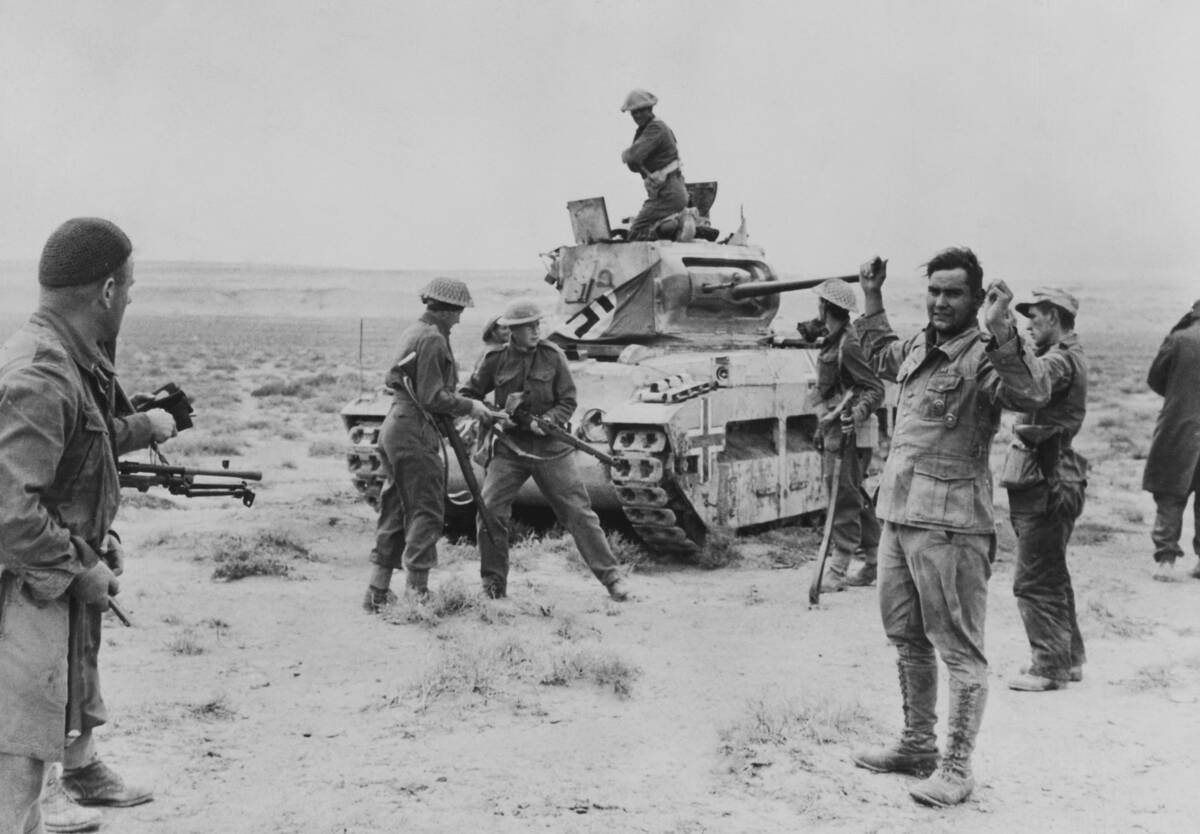
Although the African theaters of World War II tend to be a little underexplored by amateur historians compared to the war’s European and Asian campaigns, the territories and resources on that continent were the subject of fierce conflict as well.
Since Africa wasn’t a major priority for the German high command, it wasn’t unusual to see soldiers stationed there using captured enemy equipment like this British Matilda Mk. II tank. However, this crew wouldn’t hold it for long, as the 2nd New Zealand Division infantry are depicted forcing their surrender here.
Celebrating A Hard-Won Peace
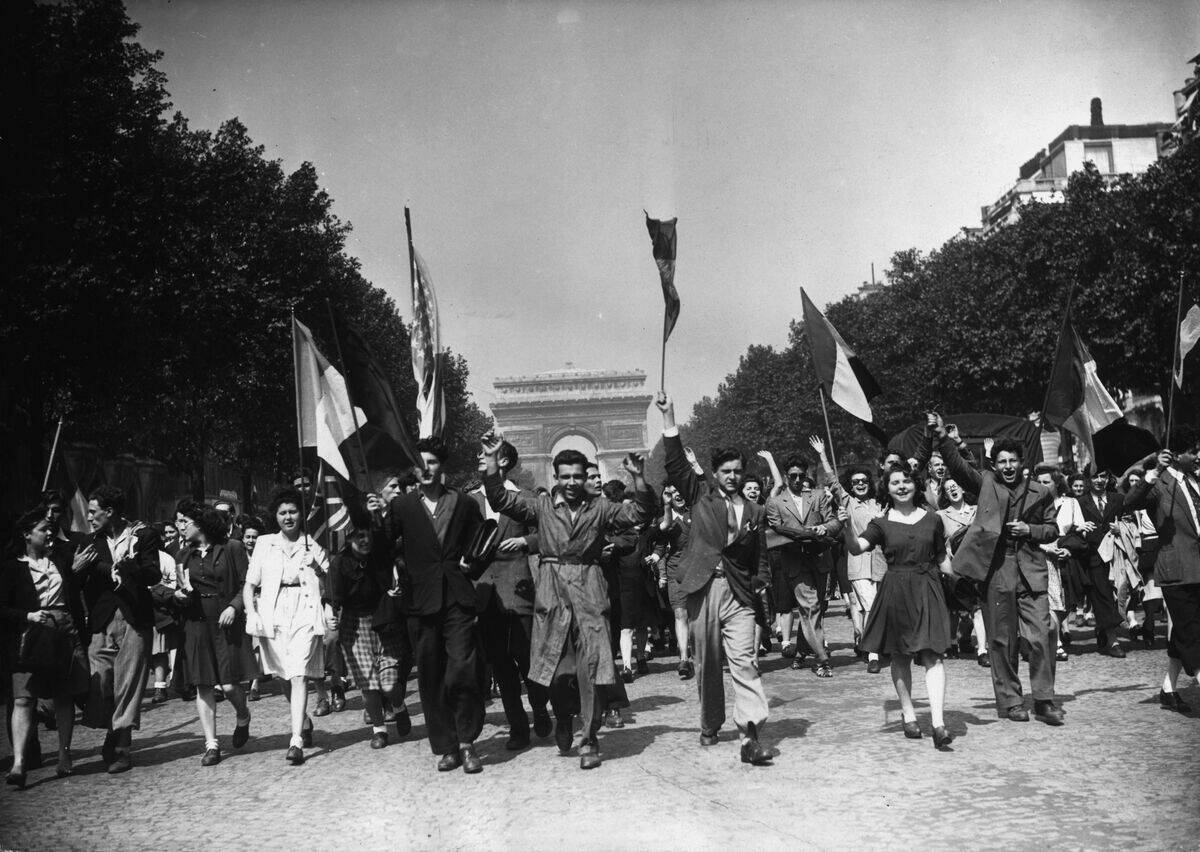
Although the United States would also see joyous celebrations across the nation on V.J. Day after Japan’s surrender in August of 1945, all of the Allied nations erupted into jubilation on 8th May 1945. This was V.E. Day, when the German threat of world domination had finally been vanquished after six uncertain years.
While many Americans have likely seen photos of their nation’s celebrations, there was a very good reason for the celebration to be just as fervent at the Champs-Élysées. All of the Allied nations had lost so many people in this war, but France had been all but torn apart under German occupation, so this reunification would mean everything to those gathered.


